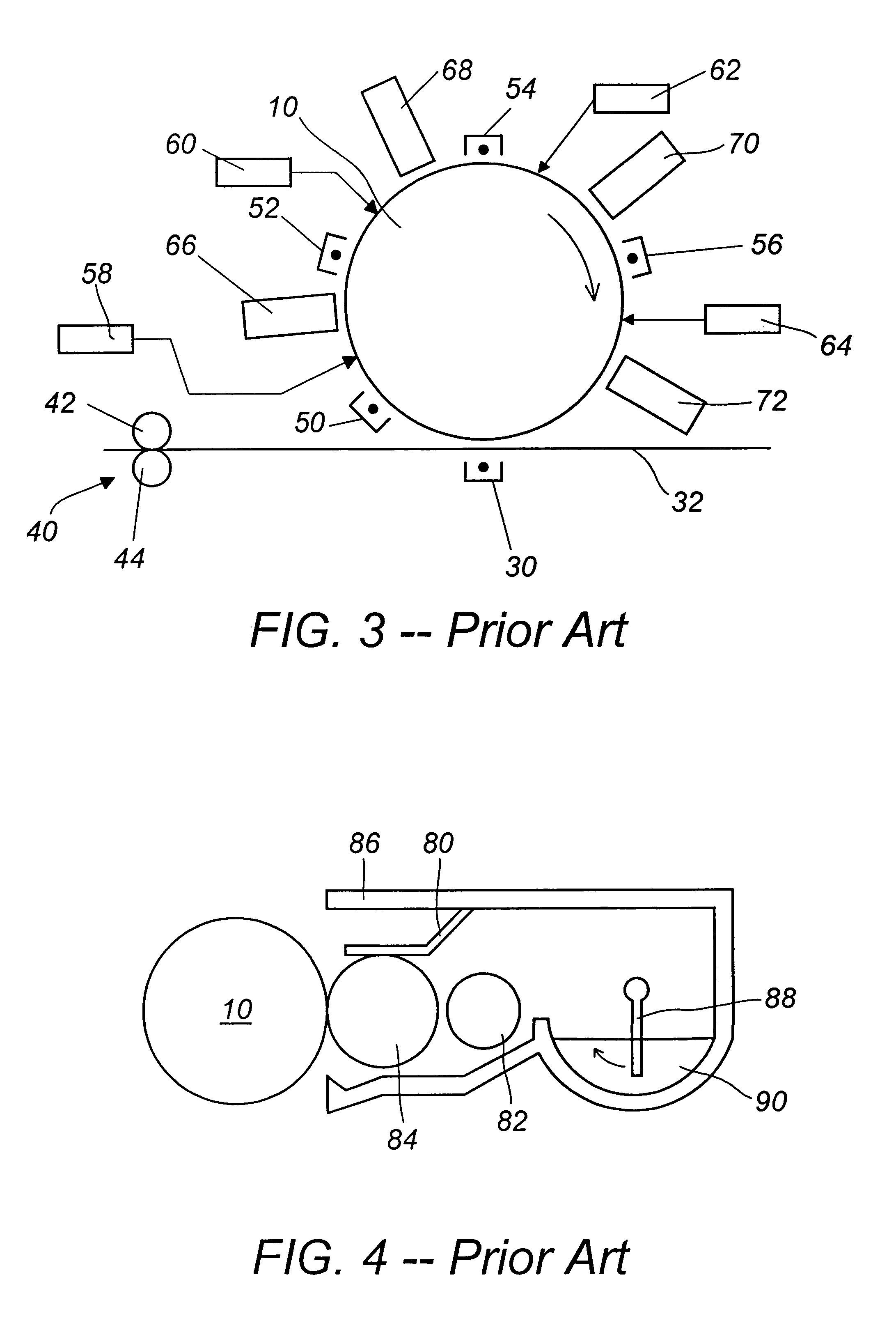Color electrophotographic apparauts having image registration
a color electrophotography and image registration technology, applied in the field of color electrophotography apparatus, can solve the problems of not keeping up with the technology of color display information, the inability to provide printed color output, and the inability to achieve acceptable high-quality output using liquid ink jet printing technology,
- Summary
- Abstract
- Description
- Claims
- Application Information
AI Technical Summary
Benefits of technology
Problems solved by technology
Method used
Image
Examples
Embodiment Construction
It is an object of the present invention to provide a color electrophotographic apparatus capable of achieving full color image reproduction with one pass developing.
It is another object of the present invention to provide a one pass color electrophotographic apparatus which is small in size and low in manufacturing cost.
One aspect of the present invention provides a color electrophotographic apparatus including a roller set including a first roller and a second roller with a flexible photoconductor configured as an endless belt and positioned to be driven by the roller set along a movement direction. A plurality of chargers are provided for applying a predetermined voltage on a surface of the flexible photoconductor. A plurality of aligned light sources are provided downstream of the plurality of chargers with respect to the movement direction of the photoconductor, the plurality of aligned light sources irradiating parallel light beams onto a specified area of the flexible photoco...
PUM
 Login to View More
Login to View More Abstract
Description
Claims
Application Information
 Login to View More
Login to View More - R&D
- Intellectual Property
- Life Sciences
- Materials
- Tech Scout
- Unparalleled Data Quality
- Higher Quality Content
- 60% Fewer Hallucinations
Browse by: Latest US Patents, China's latest patents, Technical Efficacy Thesaurus, Application Domain, Technology Topic, Popular Technical Reports.
© 2025 PatSnap. All rights reserved.Legal|Privacy policy|Modern Slavery Act Transparency Statement|Sitemap|About US| Contact US: help@patsnap.com



